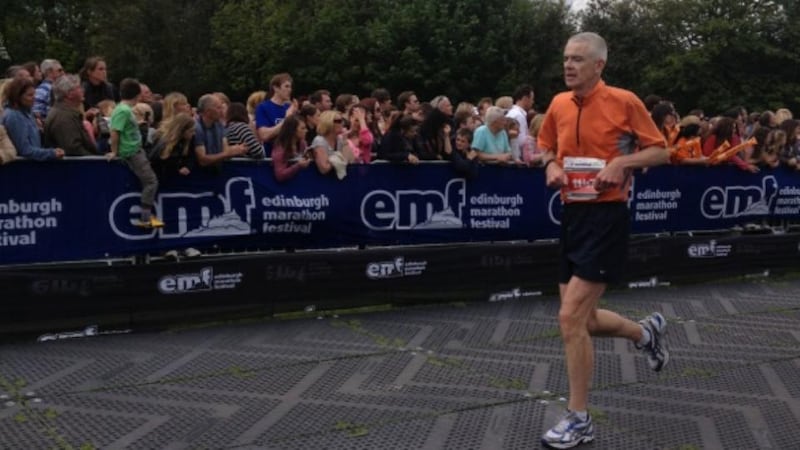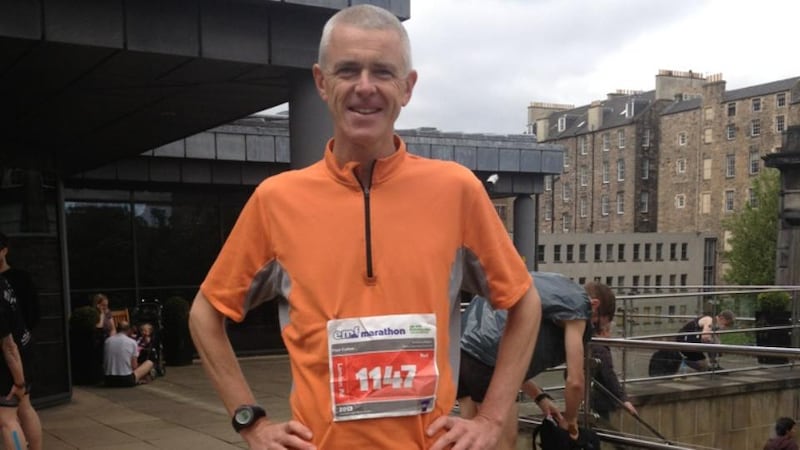If there is any phrase more associated with the marathon than “never again”, it must be those words that worm their way into your head just days after the event as the body recovers from the trauma of running 26.2 miles: “One more time.”
Just as the final miles of the classic distance are for many runners a nightmare of tightening muscles, light-headedness and intense physical pain, the days that follow often bring with them a giddy desire to do it all again.
It might be driven by annoyance at having hit the wall, or a desire to strip a few minutes off a personal best, but either way the marathon bug seems to be a recurrent condition.


How else to explain the ever-increasing array of events from which to choose during the current running boom?
Gruelling event
Yet all of us run out of road at some point or another, and increasing age takes its toll, particularly in such a gruelling event as a marathon. The time it takes to recover from a long run grows, making training more of a chore and more intrusive on the day-to-day of life. Niggles turn into full-blown injuries and ambition flags. For many, families grow as the years pass, placing other demands on time.
I thought I’d reached my “never again” moment five or six years ago. I had decided to give it one last whirl on a pancake-flat course in northern Italy.
Yet the day turned out hot and my muscles were weary, and somewhere well short of 20 miles I slipped a few gears.
The final straw came when my friend, an ex-smoker on his second marathon, pulled up alongside in the final miles and then disappeared into the distance before me.
“Maybe it’s time to hang up the running shoes,” I thought, as I slogged across the finish line, “and to spare my lower back any further pain.” In the years that followed, there was less running, a bit more cycling and, as it happened, more child-rearing and more work.
Yet the bug never goes away. There are few physical challenges as definable and, ultimately, as achievable as a marathon. Everest is too expensive now, an Ironman triathlon is too hard and cycling around the world takes too long.
On any day of the year, you’ll find two or three marathons taking place somewhere in the world, and the choice includes routes around some of the world’s greatest cities.
Final run
And so the idea grew that not only would I run one final marathon but that I would mark a significant birthday this year by attempting a personal best.
For me, after a dozen or so marathons run in varying states of preparedness, that stands at about three hours and 19 minutes, set a long time ago on a weekend visit to Bilbao.
Some things have changed since I first started pounding the streets regularly. The popularity of running has soared. There is far more science involved, some of it dubious and much of it of little relevance at the level of the ordinary runner. The internet is available as a ready source of information, advice, mutual support, scare stories and training plans.
But there are constants too – the basic equipment that suffices and the necessity to grind out long training runs in order to steel the body.
There’s also the battle between head and heart, enscapsulated in the struggle to get out of bed early on a winter’s morning in order to fit a training run in before your regular day even starts.
We older runners are a growing bunch; one in five entrants in the New York marathon is over 50 years, and one in 10 in Dublin. But we have particular demands.
We’re evangelical about stretching before and after a run because we know what happens to our well-worn muscles if we don’t.
We search out grass verges and suburban parks for their softer surfaces. And we seem to be the only runners around not wearing headphones.
Once, I ran a marathon on a whim, having entered the day before. Other times, I didn’t even wear a watch. Not any more.
This time, I submitted myself to a 20-week training programme from one of the many running websites and secured myself a GPS watch as a Christmas present.
My choice of marathon was dictated by this 20-week span from the start of my New Year’s resolution and a desire to get the challenge out of the way before the summer heat arrived.
Edinburgh got the vote. “That sounds hilly,” says everyone I mention it to, though the organisers claim it is the fastest marathon in the UK.
The route travels out of the city and along the sea front, which could prove windy, but for this reason the course is relatively flat.
My watch now tells me I’ve run more than 800 miles, about the distance from Dublin to Berlin.
The endless cold spring days mattered little to a runner, but there were wild days too – hurricane winds on Salthill promenade, a half-metre of snow in the Wicklow mountains and withering sun for 20-mile runs during a Spanish holiday.
It became surprisingly easy to fit a running routine into a busy schedule and surprisingly easy to knock off a five- or 10-mile run once a decent level of fitness had been achieved.
At times, the spirit was willing but the body failed to co-operate, as hamstrings and other muscles played up, but the care provided by the team at Pearse Street physiotherapy clinic proved a sound investment.
As I write, my challenge is but days away. The training is done, and yet I haven’t a clue how my body will react to being dragged round the distance one more time. But yes, definitely, this time – never again.
Postscript
As I write on Sunday, hours after completing the marathon here in Edinburgh on a bright summer's day, the expression about old dogs and new tricks comes to mind.
On the down side, a personal best proved elusive, thanks to a serious deceleration in the final miles. It really is time to hang up those trainers.
On the other hand, the sense of achievement is still tremendous and my body isn’t too sore.
Not to mention that 3:26 is within the qualifying time for the Boston marathon . . .











